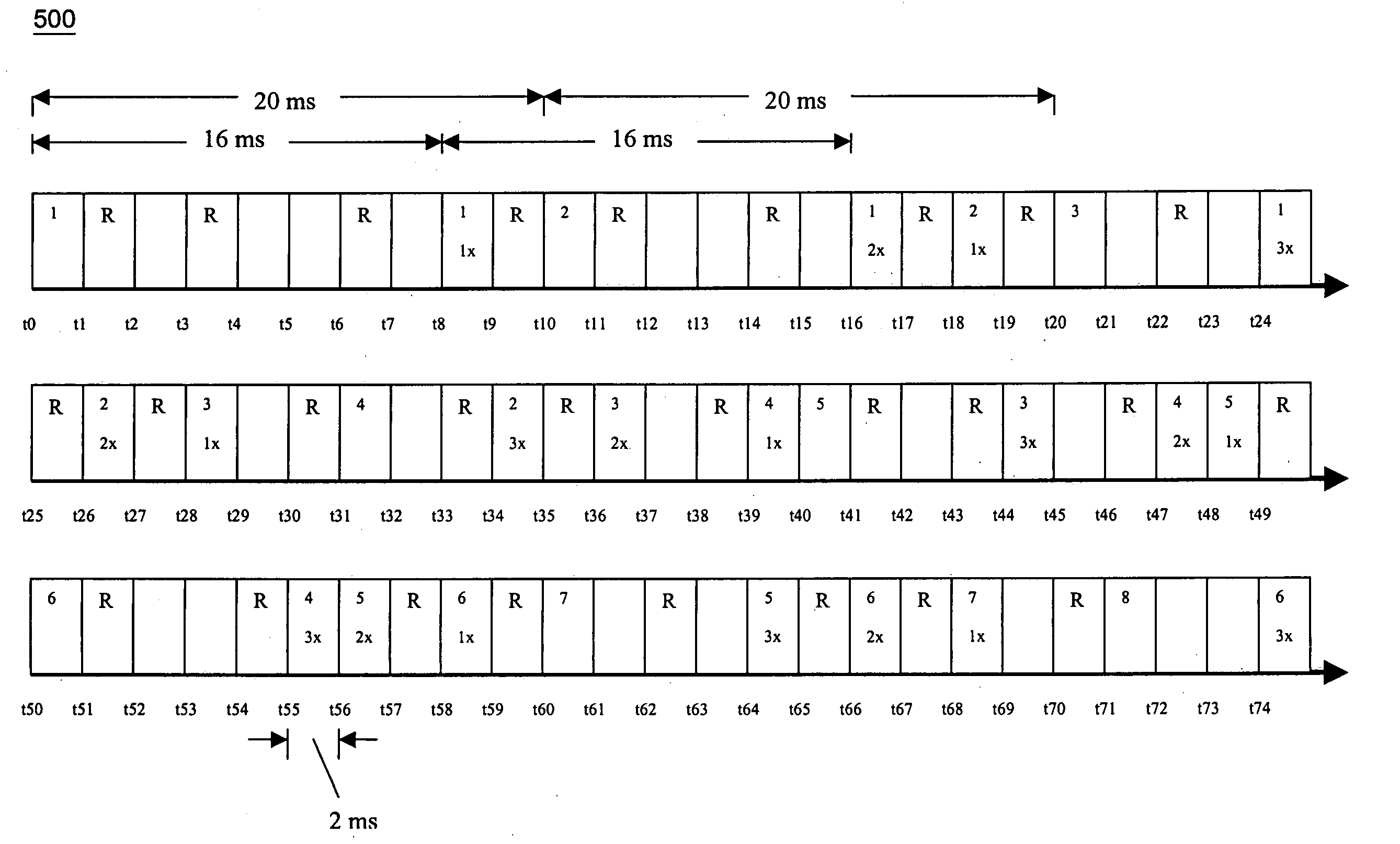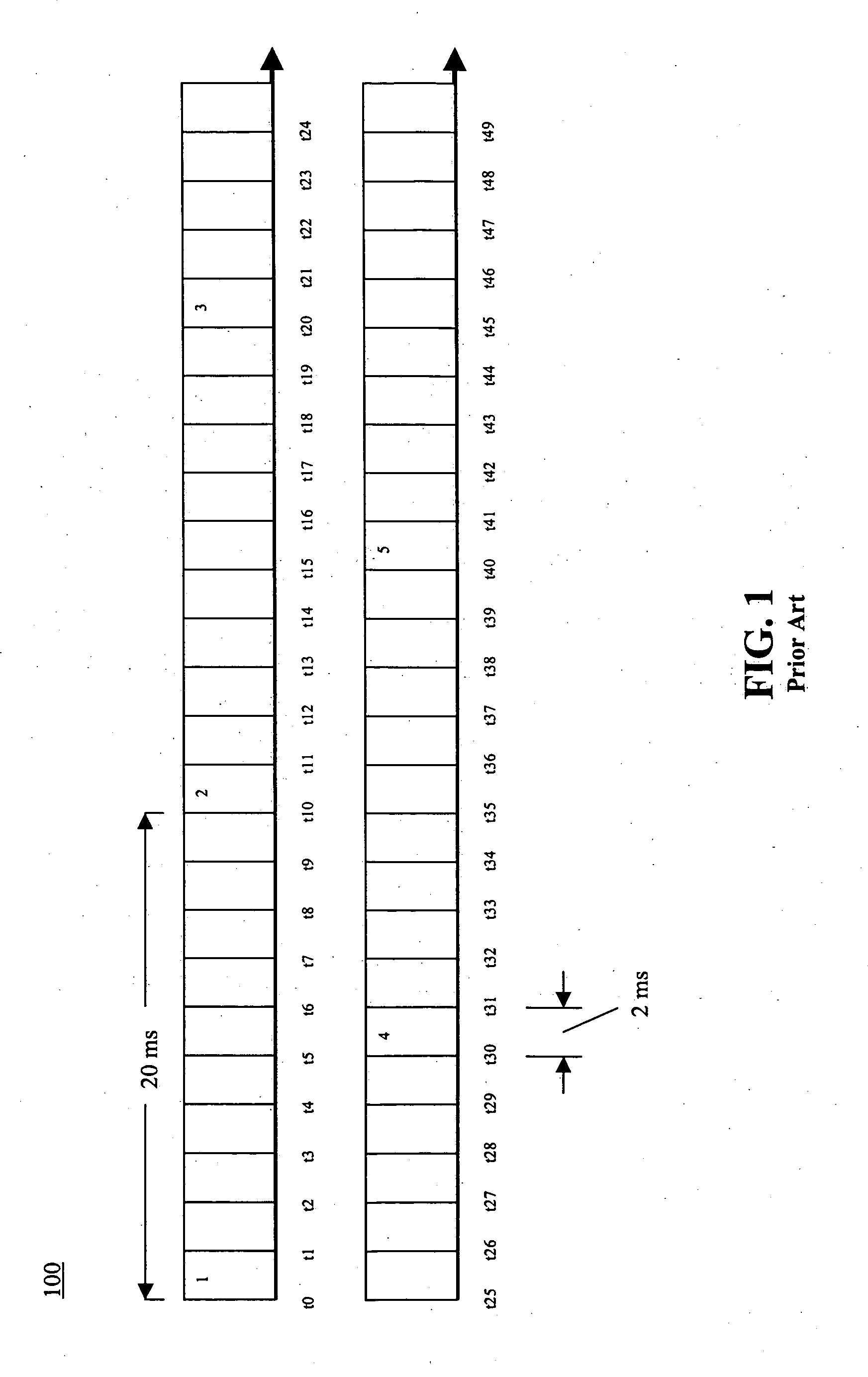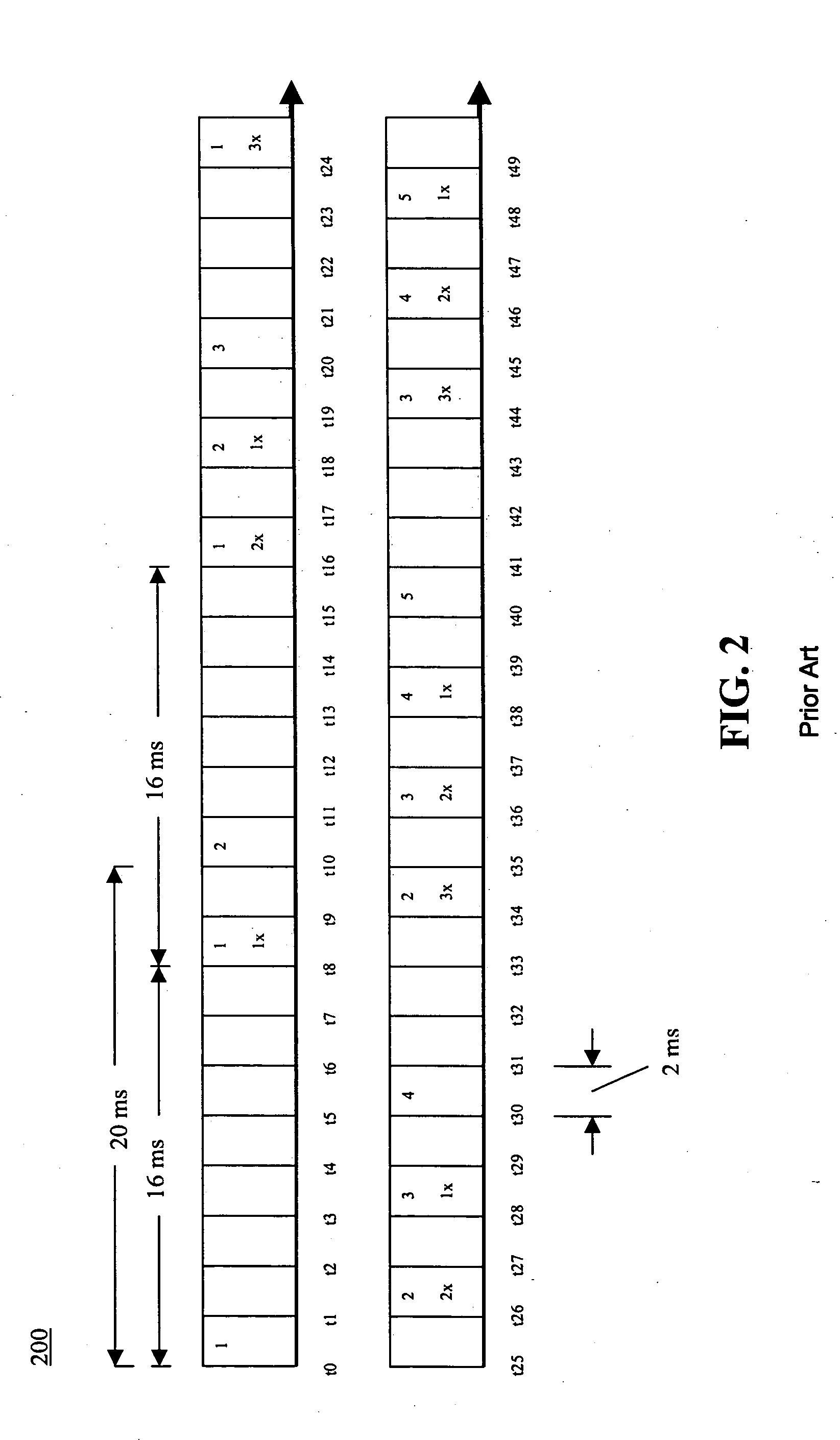Method of packet data transmission
a packet data and wireless communication technology, applied in the field of wireless communication systems, can solve the problems of hearing aid device interference, voice service implemented in the form of voice over internet protocol (voip), and may be problematic for hearing aid devices, so as to reduce the amount of delay and inherently reduce the frequency
- Summary
- Abstract
- Description
- Claims
- Application Information
AI Technical Summary
Benefits of technology
Problems solved by technology
Method used
Image
Examples
first embodiment
[0020]In an embodiment of the present invention, transmissions of the initial VoIP packet or retransmissions thereof can be staggered to reduce periodicity inherent with synchronous retransmission schemes, such as HARQ. The present invention will be described herein with respect to several embodiments of uplink data packet transmissions. In a first embodiment, transmissions are staggered by delaying some VoIP packets one or more TTIs before they are initially transmitted. Synchronous retransmissions of VoIP packets would begin after failed VoIP packet transmissions.
[0021]FIG. 3 depicts a series of VoIP packets 300 being transmitted over the E-DCH in accordance with one variation of the first embodiment. A new VoIP packet is generated every 20 ms, i.e., x=20 ms, Every other new VoIP packet is delayed one TTI before being transmitted. Odd VoIP packets 1, 3, 5 and 7 are initially transmitted at the beginning of each 20 ms time interval. Even VoIP packets 2, 4, 6 and 8 are delayed one T...
second embodiment
[0023]In a second embodiment, transmissions are staggered by delaying some, but not all, synchronous retransmissions. Synchronous retransmissions will begin y ms after failed VoIP packet transmissions began, wherein y>0. Delayed synchronous retransmissions will begin y+z ms after failed VoIP packet transmissions began, wherein z>0 corresponds to an amount of delay.
[0024]FIG. 4 depicts a series of VoIP packets 400 being transmitted over the E-DCH in accordance with one variation of the second embodiment. The initial VoIP packet is transmitted at the beginning of each 20 ms time interval, x=20 ms. Every other first synchronous retransmission of a VoIP packet is delayed one TTI, i.e., y+2 ms, after a failed initial VoIP packet transmission began. These retransmissions are also referred to herein as “delayed synchronous retransmissions.” All other retransmissions are synchronous retransmissions. First retransmissions of odd VoIP packets 1, 3, 5 and 7 are synchronously retransmissions th...
third embodiment
[0026]In a third embodiment, transmissions are staggered by imposing restrictions on when data packets can be transmitted, wherein the restrictions are configured to reduce periodicity. Data packet transmissions will not be permitted on some TTIs. TTIs in which data packet transmissions are not allowed are referred to herein as “restricted TTIs,” whereas TTIs in which data packet transmissions are allowed are referred to herein as “unrestricted TTIs.” Unless restricted, initial VoIP packet transmissions will begin at the start of x ms time intervals (during talk spurts) and synchronous retransmissions thereof, if necessary, will begin every y ms after a failed VoIP packet transmission began until a maximum number of allowable retransmissions is reached. If an initial transmission or synchronous retransmission of a VoIP packet was to begin during a restricted TTI, then the transmission will be delayed until the next unrestricted TTI. The restricted TTIs should be selected such that c...
PUM
 Login to View More
Login to View More Abstract
Description
Claims
Application Information
 Login to View More
Login to View More - R&D
- Intellectual Property
- Life Sciences
- Materials
- Tech Scout
- Unparalleled Data Quality
- Higher Quality Content
- 60% Fewer Hallucinations
Browse by: Latest US Patents, China's latest patents, Technical Efficacy Thesaurus, Application Domain, Technology Topic, Popular Technical Reports.
© 2025 PatSnap. All rights reserved.Legal|Privacy policy|Modern Slavery Act Transparency Statement|Sitemap|About US| Contact US: help@patsnap.com



